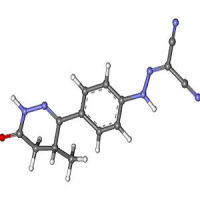Among patients with hypoxaemia after cardiac surgery, the use of an intensive alveolar recruitment strategy compared with a moderate recruitment strategy resulted in less severe pulmonary complications during the hospital stay, according to a randomised clinical trial of postoperative ventilation published in JAMA.
See Also: Towards Safer Ventilation in Critically ill Patients without ARDS
Mechanical ventilation is an effective life-support treatment. However, both the volume and pressure settings on a ventilator have been implicated in ventilator-induced lung injury, with tidal volumes that are too large implicated in overdistension and positive end-expiratory pressure (PEEP) settings that are too low implicated in alveolar collapse. Thus, current guidelines endorse a low tidal volume and a high or at least avoidance of low PEEP level. But, these “one size fits all” recommendations may not be optimal for all patients.
In this trial, conducted by Alcino Costa Leme, RRT, PhD (Hospital Das Clínicas da FMUSP, University of São Paulo, Brazil) and colleagues, postoperative ventilation with a high PEEP level (157 patients) compared with a lower PEEP level (163 patients) resulted in a significant shift toward less severe pulmonary complications and was associated with a shorter length of intensive care unit stay (3.8 vs. 4.8 days) and hospital stay (10.9 vs. 12.4 days).
"To our knowledge, this is the first study to show a significant effect of lung recruitment manoeuvres on clinical outcomes, which objectively resulted in modest reductions in ICU and hospital length of stay with no difference in in-hospital mortality or the occurrence of barotrauma," the authors write. "This is especially noteworthy considering that the control group was also receiving protective lung ventilation with low tidal volumes and moderate PEEP levels. Thus, the major difference between treatment groups was the intensity of lung recruitment."
The study results are "intriguing" and could be important for advancing current understanding of the role of PEEP in postoperative ventilation, according to an Editorial published in JAMA by Ary Serpa Neto, MD, MSc, PhD and Marcus J. Schultz, MD, PhD, both from the Department of Intensive Care, Academic Medical Center (Amsterdam).
"Could it be hypothesised that patients included in the randomised trial by Leme et al. were not simple postoperative patients with healthy lungs, but instead were patients with injured lungs after cardiac surgery? Patients included in the trial by Leme et al. were not only having oxygenation problems, but also had stiff lungs, as seen by their low respiratory system compliance. Also, electrical impedance tomography showed a misdistribution of ventilation, a typical finding among patients with severe alveolar collapse. Considering this information, is it possible that these patients could have had a type of postoperative ARDS [acute respiratory distress syndrome]? For patients with this clinical profile, there is proven evidence for benefit of ventilation with a high PEEP level," Drs. Serpa Neto and Marcus write.
They also note that postoperative ventilation with high PEEP in Leme et al.'s study resulted in a lower driving pressure -- which leads to this question: Could it be that in some patients ventilated with a high PEEP level, the driving pressure level did not change, or even increased?
The study by Leme and colleagues "provides another brick in the evidence wall of lung protection. However, it remains unclear which patients benefit most from ventilation with a high PEEP level," the authors conclude.
Source: JAMA
Image Credit: Rcp.basheer
Latest Articles
mechanical ventilation, cardiac surgery, PEEP, hypoxaemia, postoperative ventilation
Among patients with hypoxaemia after cardiac surgery, the use of an intensive alveolar recruitment strategy compared with a moderate recruitment strategy resulted in less severe pulmonary complications during the hospital stay, according to a randomised c



























